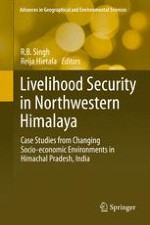2014 | OriginalPaper | Buchkapitel
9. The Challenges of Reforesting the Himalayas Through the Clean Development Mechanism: Perspectives from Rural Villages
verfasst von : Toni Haapanen
Erschienen in: Livelihood Security in Northwestern Himalaya
Verlag: Springer Japan
Aktivieren Sie unsere intelligente Suche, um passende Fachinhalte oder Patente zu finden.
Wählen Sie Textabschnitte aus um mit Künstlicher Intelligenz passenden Patente zu finden. powered by
Markieren Sie Textabschnitte, um KI-gestützt weitere passende Inhalte zu finden. powered by
